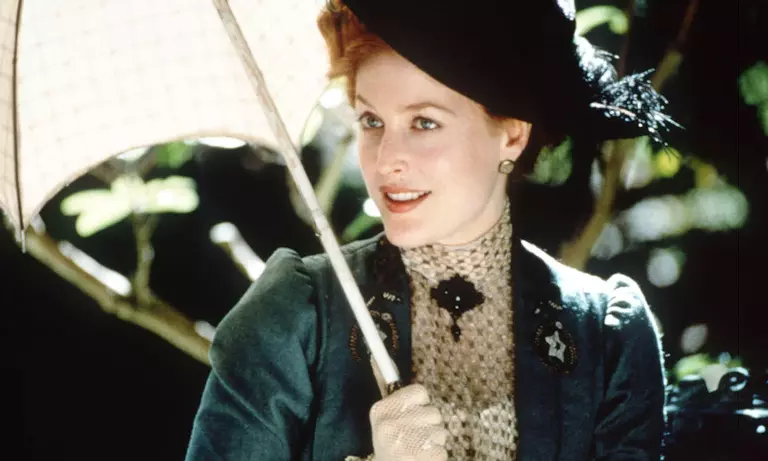Dir. Roger Avary, UK, 1993, 96 mins
Cast: Eric Stoltz, Julie Delpy, Gary Kemp
Writer/Director Roger Avary and Executive Producer Quentin Tarantino go back as far as childhood and into adulthood as they both worked at the same video store. They’re jointly credited for the story of Pulp Fiction, but if contested in court Killing Zoe would make pretty compelling evidence that Avary’s input was likely minimal at best. Legend has it after producer Laurence Bender asked Avary for a script set in a bank he thrashed this out in just under a week and a half.
It’s a pretty simple bank-heist movie akin to Reservoir Dogs, telling the story of safecracker Zed and hooker Zoe (Eric Stoltz and Julie Delpy, both wasted). The film is very cleanly split into three sections: Zed and Zoe’s first encounter in Zed’s hotel room; a drawn out drug binge mid-section and concluding with the promised bank heist.
Zed’s first scene with Zoe begins with an odd sex scene cut together with alternating images from the silent movie Nosferatu. He woos Zoe with lines like, “200 bucks and I can’t even pee on you”. Obviously she falls for him immediately (even though he’s clearly reprehensible). This scene is full of odd contradictions; Zoe accuses him of being a good person (he clearly isn’t) then scolds him for calling her a prostitute (she very clearly is). This dialogue driven bedroom screen occupies a laborious 20 minutes of the running time culminating with this piece of verbal wisdom from Zed, “Sometimes you need the honesty and security of a whore”.
The drugged out trip with Zed and his future cohorts wants to think it’s paying tribute to Scorsese’s Mean Streets but it’s at least 10 minutes too long and piles on some more casual homophobia and sexism in its duration, “Crap on me if you like. I need to be treated like a dog”. Woman exist solely as slaves and victims in this film’s universe.
There are pop culture references to Dixieland and Viking movies but with none of the wit that Tarantino or Kevin Smith would employ in their films. Things are kept visually interesting during this segment with some interestingly employed animation and vibrant swing jazz music.
The most distracting element of how it’s shot is just how over-lit everything is. Most characters (especially Delpy) are drowned in luminescence making everyone strangely pale. Everything feels like a sub-Asylum Pictures version of what Tarantino and Miramax would achieve later in the 90s. In that sense it’s weirdly prophetic to see so many disparate elements that would be used to far greater effect by Luc Besson, Larry Clark, Doug Liman and Guy Ritchie.
Every character, with the exception of a sleep-walking Stoltz and Delpy are shrill, witless, cackling hyenas. This becomes even more apparent during the finale heist where the dialogue descends to a film equivalent of a message board troll ranting in block capitalised string sentences.
Zed, along with Zoe gets a small moment of redemption in the closing scenes and there’s a decent practical bit of make-up from FX genius Tom Savini (which is oddly prophetic of Aaron Eckhart as Two-Face in The Dark Knight). It’s also notable for a high octane (again very distinctively 90s) techno score by Tomandandy of Resident Evil fame.
While it’s not a good movie by any stretch, it does serve as pretty good time capsule that encapsulates everything repugnant and ridiculous about 90s culture. More or less every character rocks a Kurt Cobain style set of floppy curtains for hair and rampant violence and drug use abounds. At least one character secretly has AIDS, and a nihilistic apathy common to Generation Xers is all present. It fancies itself as a modern Clockwork Orange bug with none of the intelligence and subtext that make it a classic. In that sense it’s hard to recommend to casual viewers but it’s a worthwhile watch for Tarantino completists and historians of the excesses of early 90s Hollywood.
Review by Mark Bartlett
[SRA value=”2″ type=”BIG”]
Killing Zoe is out now on DVD and Blu-ray.




